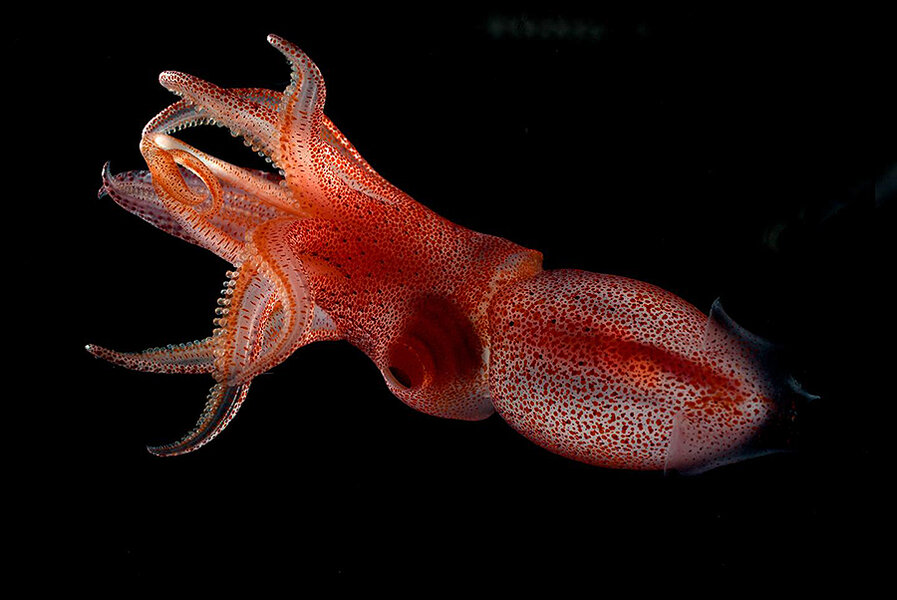How this cockeyed squid shines a light on deep sea evolution
Loading...
The deep sea has its fair share of quirky creatures equipped with odd features, and the “cockeyed” squid, sporting two different sized eyes, likely doesn't stand out too much among other bottom ocean dwellers.
But scientists have never before been able to pinpoint a reason for its two vastly different eyes. But now, researchers from Duke University may have finally nailed down an answer, according to a study published Monday in the journal Philosophical Transactions of the Royal Society B.
The cockeyed squid, officially known as Histioteuthis heteropsis, has long puzzled researchers. While the species is born with eyes of the same size, its left eye grows rapidly, becoming tube-shaped and sometimes twice the size of its right eye.
"You can't look at one and not wonder what's going on with them," Duke University biologist and study co-author Kate Thomas said in a press release.
Researchers watched more than 150 videos of the squids swimming in the Monterey Submarine Canyon in Monterey Bay, Calif., which were recorded over the past three decades, observing as they swam in an unconventional upside-down position. While doing so, the squids’ larger, left eyes continuously looked up, while their smaller right eyes were fixed downward.
Observation and light simulations revealed that the large eye seems to search for shadows of different fish swimming overhead, while the small eye scans the ocean floor for signs of light emitted by other marine organisms.
While the left eye's field of vision picks up shadows from sun shining into the water, that's not an option for the downward-facing eye, scientists concluded. Instead, they detect bioluminescence, the kind of chemically-produced light that comes from living organisms such as fireflies or deep sea fish. That requires a different kind of eye structure than is needed for ambient light. Bigger isn't better when it comes to spotting glowing fish, the researchers found, but larger eyes are better at detecting sunlight.
So while the cockeyed squid’s design might look odd at first glance, it actually allows the squids to navigate their complex environment.
"The eye looking down really only can look for bioluminescence," Sönke Johnsen, the study's senior author and a professor of biology at Duke University, said in a statement. "There is no way it is able to pick out shapes against the ambient light. And once it is looking for bioluminescence, it doesn't really need to be particularly big, so it can actually shrivel up a little bit over generations. But the eye looking up actually does benefit from getting a bit bigger."
Overall, squid species are faring well among their deep sea neighbors. A 2016 study revealed that squid numbers have continuously boomed for six decades, while climate change and warming waters have spelled trouble for some other species.
While that marks good news for cephalopods for now, some wonder what long-term implications for aquatic life the trend could have – particularly for the creatures they eat.
"We're seeing a new world here, one we haven't seen before. Any time you push an ecosystem into a different state, there's greater uncertainty in how it will behave, and how it will respond to future changes. Frankly, I think that should make people really worried," Ben Halpern, a biology professor at the University of California, Santa Barbara's Bren School of Environmental Science and Management and the director of the school's Center for Marine Assessment and Planning, told The Christian Science Monitor last year.
"More squid and octopus to eat may seem like a good thing, and in the short run maybe it is. But I'm more worried about the long run," he said.






